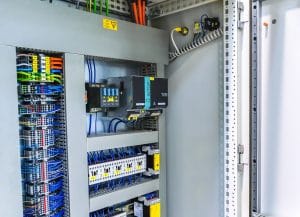 Thermal management can mean a wide range of different things for different industries. In most, however, it involves the means by which a company keeps its electrical enclosures and other equipment properly cooled during operation. In fact, electrical enclosure cooling has been one of the most important aspects of thermal management for as long as companies have relied on technology. This is one reason why heat exchangers became so popular so relatively quickly; their ability to streamline electrical enclosure cooling helped companies significantly reduce the costs and burdens associated with thermal management.
Thermal management can mean a wide range of different things for different industries. In most, however, it involves the means by which a company keeps its electrical enclosures and other equipment properly cooled during operation. In fact, electrical enclosure cooling has been one of the most important aspects of thermal management for as long as companies have relied on technology. This is one reason why heat exchangers became so popular so relatively quickly; their ability to streamline electrical enclosure cooling helped companies significantly reduce the costs and burdens associated with thermal management.
The history of cooling electrical enclosures
The process of cooling electrical enclosures is vital for companies to keep their technological solutions running properly. Traditionally, they accomplished this process with the help of conventional cooling technologies, such as HVAC systems and air compressing units. While these solutions were easy to come by and implement, maintaining such systems has always been costly and time-consuming. Nevertheless, they were necessary, as companies had few or no other choices to prevent electrical overheating. Today, however, the process of electrical enclosure cooling is a much more efficient and effective one, thanks largely to the advent of heat exchangers.
The thermal management ideas behind heat exchangers
The way traditional cooling solutions prevent electrical overheating is by forcefully keeping temperatures low within an electrical enclosure. As electrical components give off waste heat, the cooling unit produces and circulates chilled air to stop the heat from causing damage. By contrast, heat exchangers focus on the waste heat itself, rather than on chilled air. A heat exchanger is designed to absorb electrical waste heat and transfer it somewhere it can be safely dissipated. It does this by circulating an eco-friendly cooling fluid through the heat exchanger unit, allowing the fluid to absorb and transfer the heat instead of having to fight against it.
Heat exchangers and advanced electrical cooling
The innovative heat transfer principles that heat exchangers rely on are the key to the many different benefits they provide. For example, transferring waste heat within a heat exchanger is much more cost-effective than more conventional cooling methods, as it uses a significantly lower amount of energy. Heat transfer concepts are also easily adaptable to an increasingly wider range of thermal management applications, making heat exchangers even more invaluable to companies’ operations. For more information about how heat exchangers provide more efficient electrical enclosure cooling, call Noren Thermal Solutions in Taylor, TX, at 866-936-6736.







